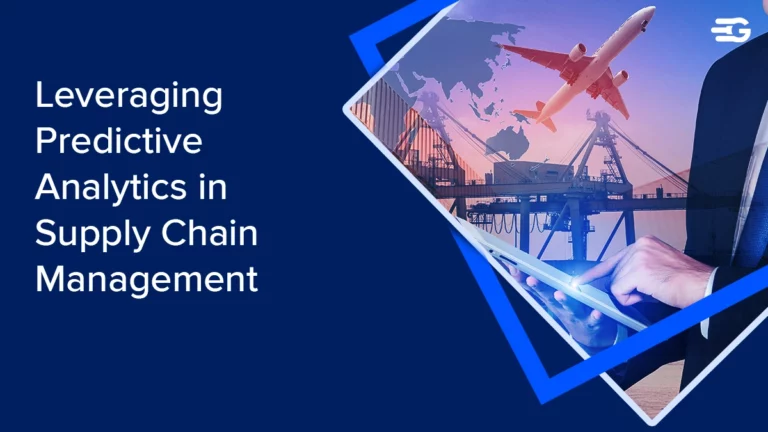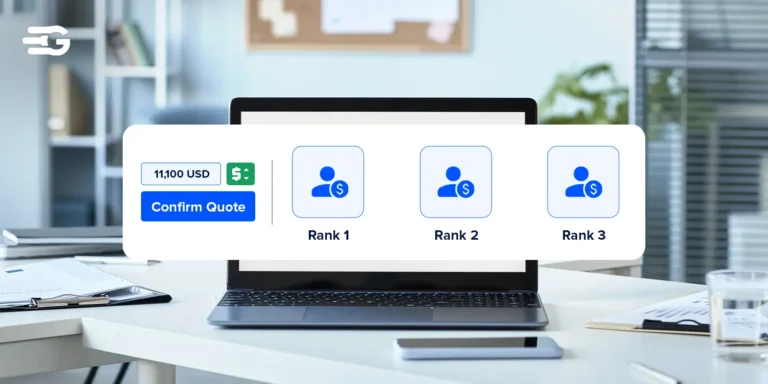Top Supply Chain Optimization Software
Modern supply chains face unprecedented complexity: fluctuating demand patterns, geopolitical disruptions, multi‑modal transportation networks, and rising customer expectations for fast, transparent delivery. Against this backdrop, optimization software does far more than trim costs—it creates resilient, responsive supply chains that can anticipate disruptions, pivot rapidly, and continuously improve. By unifying data from ERP, TMS, WMS, and external sources (market rates, weather, social media signals), these platforms empower planners and operations teams with actionable insights and automated decision‑making.
In this article, we examine five leading solutions—GoComet, Logility, SAP IBP, Oracle Supply Chain Planning Cloud, and Anaplan.
1. GoComet
Overview
GoComet provides a freight‑centric optimization platform designed to tackle the opacity and fragmentation of logistics data. Real‑time multi‑carrier tracking, automated delay management, and AI‑powered ETA predictions give shippers proactive control over transportation execution. As a cloud‑native SaaS, GoComet deploys rapidly and scales with your shipment volumes, making it well suited for teams that need quick wins in freight cost reduction and service improvement.
Key Features
- Real‑Time Multi‑Carrier Tracking via EDI, API, and email‑parsing for ocean, air, road, and rail
- Predictive ETA Engine that fuses carrier schedules, port congestion, and historical performance to forecast arrivals
- Automated Alerts & Notifications for deviations, enabling exception-driven workflows
- Freight Cost Benchmarking against market indices to surface savings opportunities
- Delay Management Dashboard distinguishing confirmed vs. potential delays, with recommended mitigation actions
Limitations
- Scope Focused on Freight: Lacks modules for inventory planning, procurement, or production scheduling
- Ecosystem Maturity: Fewer third‑party connectors compared with legacy TMS/ERP vendors
2. Logility
Overview
Logility Voyager Solutions delivers a comprehensive supply chain planning (SCP) suite, with deep roots in demand forecasting and inventory optimization. Its statistical and machine‑learning models drive more accurate forecasts, while multi‑echelon inventory optimization balances service levels with working‑capital reduction. Organizations with complex networks of plants, distribution centers, and retail outlets turn to Logility for its scenario‑based planning and collaborative S&OP workflows.
Key Features
- Advanced Demand Planning: Time‑series, causal, and ML‑driven forecasting
- Multi‑Echelon Inventory Optimization to minimize inventory while safeguarding service targets
- Sales & Operations Planning (S&OP) with integrated financials and cross‑functional collaboration
- Scenario Modeling for supply disruptions, promotion planning, and new‑product introductions
- Control Tower Visibility with KPIs, dashboards, and real‑time alerts
Limitations
- Steep Learning Curve: Rich features lead to UI complexity and training demands
- Lengthy Deployment: Full SCP roll‑out can take 6–12 months
- License & Maintenance Costs: Can be prohibitive for smaller organizations
3. SAP Integrated Business Planning (IBP)
Overview
SAP IBP is a unified, cloud‑native planning suite built on the HANA in‑memory platform. It synchronizes demand, supply, inventory, and financial planning, delivering real‑time analytics and end‑to‑end visibility. SAP IBP is the natural choice for enterprises deeply embedded in the SAP ecosystem, offering seamless integration with S/4HANA, ECC, and SAP TM/WMS.
Key Features
- In‑Memory Real‑Time Analytics for instant plan recalculation
- Demand Sensing using real‑time signals (POS, IoT) to refine short‑term forecasts
- Constraint‑Based Supply Planning considering capacities, lead times, and dependencies
- Multi‑Echelon Inventory Optimization with advanced service‑level modeling
- Integrated S&OP with built‑in financial alignment and profitability analysis
- Exception Management through KPIs and alert frameworks
Limitations
- High Total Cost: Significant subscription, infrastructure, and consulting fees
- Implementation Complexity: Often requires 9–15 months and specialized SAP consultants
- Overpowered for Mid‑Market: Many features remain unused by smaller operations
4. Oracle Supply Chain Planning Cloud
Overview
Oracle’s Supply Chain Planning Cloud sits within the Oracle Cloud SCM suite, delivering demand management, supply network planning, and order orchestration in a unified, AI‑enriched environment. Deep ERP integration ensures consistent master data, transactional flows, and financial reconciliation, making it a go‑to for large enterprises standardizing on Oracle Cloud.
Key Features
- Demand Management & Forecasting with embedded machine‑learning trend and seasonality detection
- Supply Network Planning optimizing production, distribution, and transportation holistically
- Intelligent Order Orchestration for real‑time order promising and allocation
- Anomaly Detection in forecasts and operations via AI/ML algorithms
- Seamless Oracle ERP Integration for master data, transactions, and accounting
Limitations
- Rigid Customization due to deep ERP coupling, leading to upgrade fragility
- Specialist Dependency on Oracle SCM Cloud experts for advanced configurations
- Comparable TCO & Timelines to SAP with significant professional services investment
5. Anaplan
Overview
Anaplan’s connected planning platform leverages its Hyperblock™ in‑memory calculation engine to support custom modeling across supply chain functions. Though horizontal—serving finance, sales, HR, and supply chain—its drag‑and‑drop modeling and real‑time scenario planning make it a favorite among analysts who need flexibility without coding.
Key Features
- Custom Model Building via an intuitive, formula-driven interface
- Real‑Time “What‑If” Analysis for supply disruptions, demand spikes, capacity shifts
- Collaborative Dashboards with commenting, tasks, and version control
- Open Integration through APIs, Anaplan Connect, and pre‑built connectors
- Excel‑Like User Experience that eases adoption for business users
Limitations
- Model Governance: Large Hyperblocks require strict version control and can slow if ungoverned
- Scaling Complexity: Performance tuning needed as models grow in size and complexity
- Subscription Costs escalate with users and model footprints
Comparative Analysis
| Criteria | GoComet | Logility | SAP IBP | Oracle SCP | Anaplan |
|---|---|---|---|---|---|
| Best for… | Freight visibility & cost optimization | Demand & inventory planning | Enterprise‑scale integrated planning | End‑to‑end Oracle ecosystem | Flexible, cross‑functional planning |
| Deployment Time | 1–3 months | 6–12 months | 9–15 months | 9–14 months | 3–6 months |
| Key Strength | Real‑time freight ETAs | Statistical forecasting & MEIO | In‑memory analytics & SAP integration | AI/ML-driven end‑to‑end planning | Custom modeling flexibility |
Choosing the Right Tool
Selecting the optimal platform requires aligning software strengths with your organization’s strategic priorities, capabilities, and constraints. Here’s a deeper decision framework:
Define Your Optimization Objectives
Transportation Efficiency: If freight cost and on‑time performance are paramount, GoComet’s specialized tracking and predictive ETAs deliver rapid ROI.
Demand & Inventory Balance: For companies juggling complex networks and seasonal variability, Logility’s statistical and ML‑driven planning and multi‑echelon inventory optimization will improve service levels while reducing carrying costs.
End‑to‑End Planning Integration: Enterprises seeking unified financial, demand, supply, and inventory planning under one architecture should lean toward SAP IBP or Oracle SCP. These platforms excel at breaking down silos but demand significant investment.
Agile Scenario Modeling: If rapid “what‑if” analysis and cross‑functional collaboration are key, Anaplan’s modeling flexibility empowers teams to test strategies without IT intervention.
Assess Organizational Readiness
IT & Consulting Bandwidth: Heavyweights like SAP IBP and Oracle SCP require experienced consultants, change management, and extended timelines. Ensure you have or can engage the necessary resources.
Business User Adoption: Platforms with intuitive, Excel‑like interfaces (Anaplan, Logility) often see faster user buy‑in versus more technical environments.
Data Maturity: Strong master data governance and integration capabilities are prerequisites for any tool. If your data landscape is fragmented, prioritize solutions with robust API and connector support (GoComet, Anaplan).
Budget & Time-to-Value
Rapid Deployment (<6 months): GoComet and Anaplan can stand up quickly, enabling pilot projects and incremental rollouts.
Medium-Term Transformation (6–12 months): Logility strikes a balance of depth and deployment time for mid‑sized enterprises.
Long‑Term Strategic Platforms (9–15 months): SAP IBP and Oracle SCP deliver comprehensive capabilities but require a multi‑phase implementation roadmap.
Integration Footprint
Single‑Vendor ERP Strategy: If you’re standardized on SAP or Oracle ERP, using the vendor’s planning cloud minimizes integration friction and simplifies support.
Heterogeneous Systems: For best‑of‑breed landscapes, choose tools with open architectures and pre‑built connectors. Anaplan’s API layer and GoComet’s carrier integrations make them strong candidates.
Scalability & Future Growth
Geographic Expansion: Evaluate whether the tool supports local carriers, languages, and regional regulations.
Functionality Roadmap: Review each vendor’s product roadmap to ensure alignment with emerging needs—AI‑driven optimization, sustainability metrics, control‑tower enhancements.
No single solution fits every organization. Freight‑focused teams will find GoComet’s real‑time visibility and predictive ETAs invaluable. Planning-centric enterprises can leverage Logility or Anaplan for sophisticated forecasting and scenario modeling. Large global players with deep ERP investments should evaluate SAP IBP or Oracle SCP for their end‑to‑end integrated planning capabilities.
By clarifying your optimization objectives, assessing readiness, and balancing time‑to‑value against long‑term strategic gains, you can choose the platform that transforms your supply chain into a competitive advantage.





